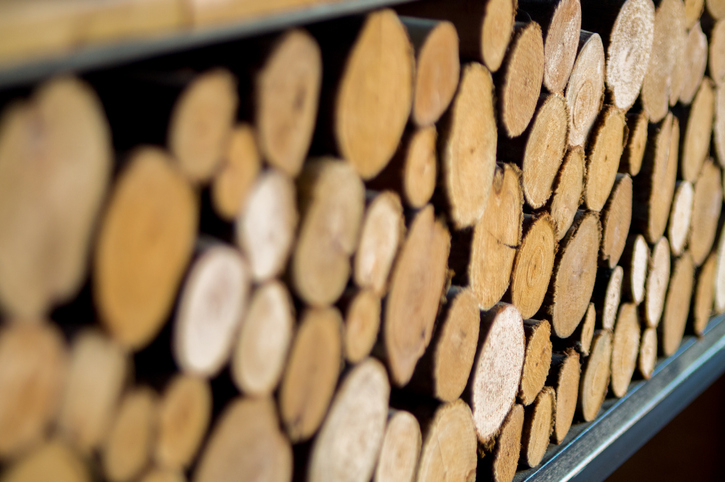Wood has been used for buildings from time immemorial. Timbers have been found, intact, dating thousands of years in the past. Mass timber construction, therefore, has history on its side as well as environmentalists. Wood construction supports sustainability of forests and buildings both.
The U.S. Dept. of Agriculture (USDA) Secretary Tom Vilsack has announced the awarding of more than $32 million to fund 2022 wood innovations and community wood grants to expand the use of wood products, strengthen emerging wood markets, and support active management to improve forest health and resilience, especially in light of the ongoing nationwide wildfire crisis.
The SLB (Softwood Lumber Board) also supports the WIG (Wood Innovation Grants) program, adding over $272K in matching funds for six ambitious projects that will explore and elevate the use of mass timber and mass timber products in commercial and residential construction.
Waechter Architecture and KPFF Consulting Engineers received a $40,000 match from the SLB to help identify the barriers to the competitive construction of all-wood buildings. It’s common for new mass timber projects to assume hybrid construction methods in the pursuit of tall-wood buildings. Waechter Architecture is working to construct all-wood buildings and to remove barriers for more of the industry to do the same.
Karagozian & Case, Inc. and SmartLam received a $50,000 match from the SLB to build upon a previous WIG grant to construct full-scale CLT (cross-laminated timber) panels with steel reinforcement. This year, the organizations will test the effectiveness of reinforced CLT panels under extreme conditions through blast testing and hygrothermal testing.
Equilibrium Consulting received a $40,000 match from the SLB for its CLT Design Tools project. With this funding, Equilibrium will make significant improvements to preliminary tools designed to improve the efficiency and accuracy of CLT floor, roof, and wall design and will also begin to distribute the tools to the engineering community.
The Georgia Forestry Foundation received a $22,500 matching grant to develop a mass timber demonstration project in partnership with the Georgia Institute of Technology. The project will seek to position mass timber as a solution for sustainable development while building awareness of Georgia’s working forests.
Sustainable Northwest received a $50,000 match for its Building Projects with Positive Impact project, which will support intentional wood procurement for five pilot projects across multiple scales, ownerships, and construction types. It will also measure the positive impacts associated with wood sourcing.
The Neutral Project received a $70,000 match from the SLB to complete the necessary architecture, engineering, fire safety, building code analysis, sustainability quantification, and preconstruction cost analysis for the completion of two high-rise, mass timber, mixed-used, multifamily developments in Wisconsin.
The SLB and USDA Forest Service also recently announced the winners of the 2022 Mass Timber Competition: Building to Net-Zero Carbon. Six winning projects were chosen for their ability to demonstrate mass timber’s innovative, scalable applications in architectural design and to highlight its significant role in reducing the built environment’s carbon footprint.
The winning projects, which will share $2 million in total funding, are:
- The 176,000-sq.ft. Vancouver Ambulatory Care Center medical facility in Vancouver, Washington, proposed by ZGF Architects, Timberlab, Swinerton, and PCS Structural Solutions.
- Return to Form, a 12-story multifamily and retail project in Denver, Colorado, which will include affordable housing units, proposed by Katz Development, Timberlab, KL&A Engineers and Builders, and Tres Birds.
- Evergreen Charter School’s 85,000-sq.ft. gymnasium in Hempstead, New York, proposed by Martin Hopp Architect, Consigli, and Odeh Engineers.
- A 42,456-sq.ft. industrial warehouse for Alaskan Copper & Brass in Kent, Washington, proposed by atelierjones, Foushee, Timberlab, and DCI Engineers.
- INTRO Phase 2, a multifamily high-rise building in downtown Cleveland, Ohio, proposed by Harbor Bay Real Estate Advisors, Hartshorne Plunkard Architecture, and Forefront Structural Engineers.
- Killingsworth, an 18,780-sq.ft. community-centric office building in Portland, Oregon, proposed by Adre, LEVER Architecture, and Holmes US.
Each project will use wood sourced from sustainably managed forests, and many prioritize mass timber that is both domestically harvested and manufactured. Lessons from these projects will be shared with the broader design and construction communities to support project development and replication, including research on cost analyses and life-cycle assessments.
Want to tweet about this article? Use hashtags #construction #sustainability


